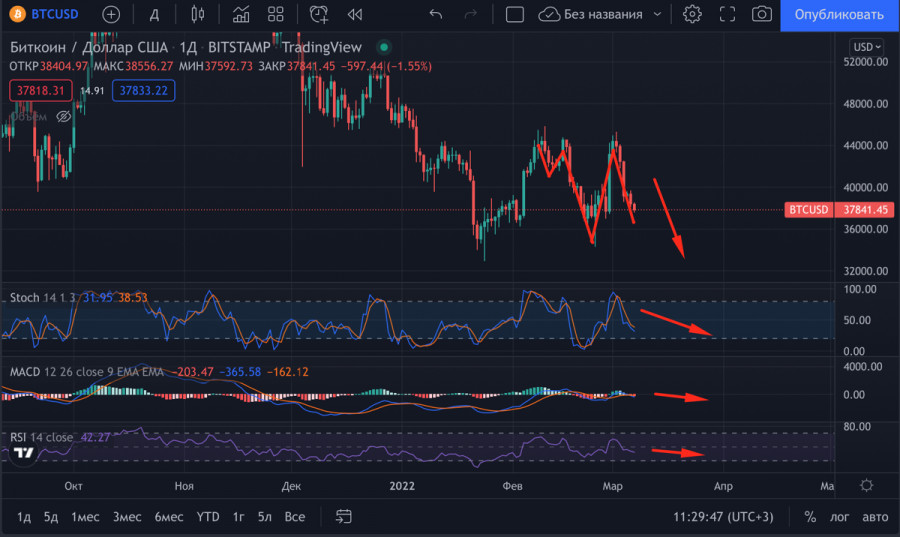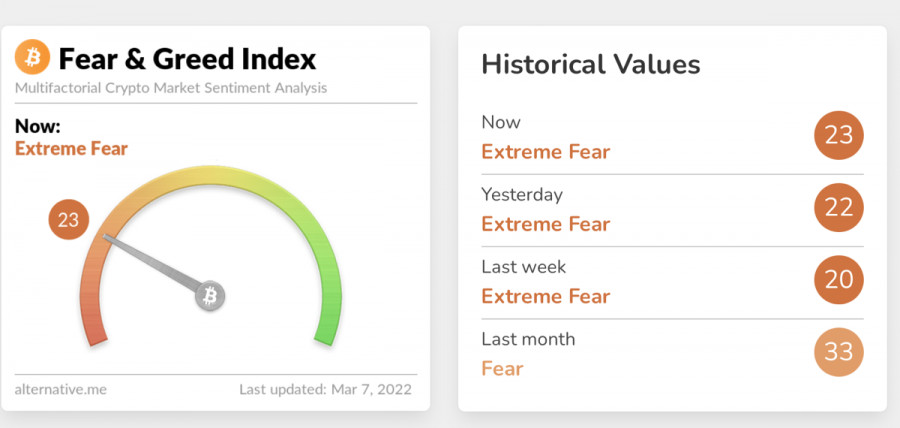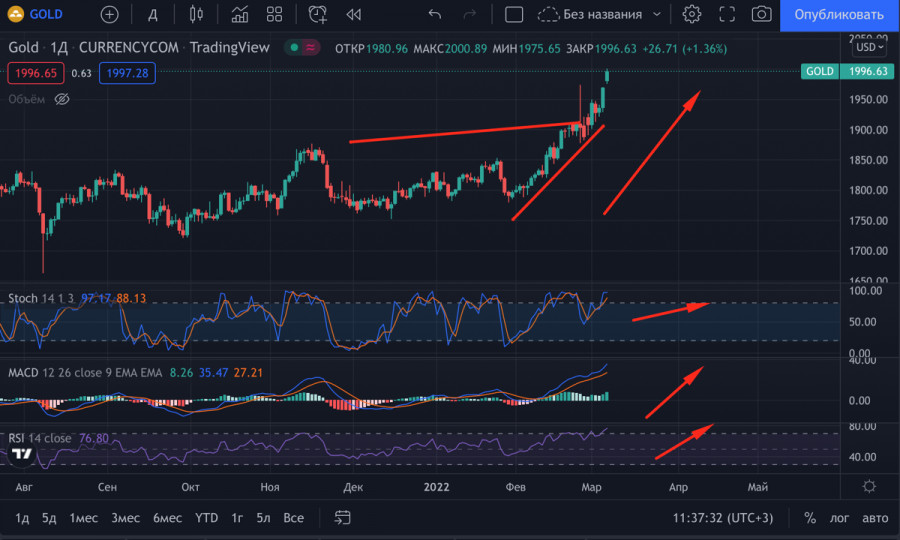
After Russia invaded Ukraine, bitcoin rose by nearly 15% in 24 hours. Investors have not seen such unprecedented growth for more than a year. Therefore, many cryptocurrency experts predicted that bitcoin could hit the level of $50,000. The main argument for a medium-term bullish scenario of BTC was its ability to hedge risks. However, the cryptocurrency failed to implement the medium-term bullish scenario.

On Monday, the asset was trading at around $38,000 as its liquidity fell at weekends. Investors are relocating their capital, trying to avoid another package of EU sanctions. Therefore, the inverted head and shoulders pattern was broken on the daily chart. The price broke the level of the shoulders in a downward direction around $38,500. Consequently, the market was shocked again. Besides, bitcoin's bullish momentum to reach the $54,000 level failed.

Possible reasons for BTC to break the level of $40,000 are tightening of EU and US sanctions on cryptocurrency transactions. Leading South Korean cryptocurrency trading platforms restricted access to users with Russian IP numbers. Moreover, one of the biggest US cryptocurrency exchanges said it could immediately block access to the cryptocurrency platform for Russian users. Finally, the Swiss government announced it would freeze all assets belonging to companies and citizens of Russia.
The devastating blow to the Russian crypto market forced investors to change the priority of investments. Consequently, gold hit another local high of $2,000. Other precious metals also set local or record highs. Platinum and palladium reached new all-time highs, indicating the dominance of the precious metals sector in equity markets.

The main reason for the resurgent interest in precious metals is bitcoin's legislative uncertainty. Significant gaps in the regulatory framework could be beneficial for the Russian economy. However, the situation deteriorated as the EU and US imposed sanctions on Russia. Therefore, investments in digital assets can lead to significant losses as investor protection at the legislative level is low.
Taking these facts into account, the downward trend of BTC/USD price movement is possible in the near future. The support level around $36,500 will most likely become the final point of decline. In this case, the current decline should be considered as a further accumulation in the range of $35,000-$45,000.
Technical indicators also show further downward trend and a test of the support zone. The MACD has dropped below zero and is moving in the red zone, while the relative strength index and stochastic oscillator confirm strong bearish pressure. Taking these aspects into account, it is advisable to expect bitcoin to retest the level of $36,500. Then, it is recommended to update the analysis according to price behavior.